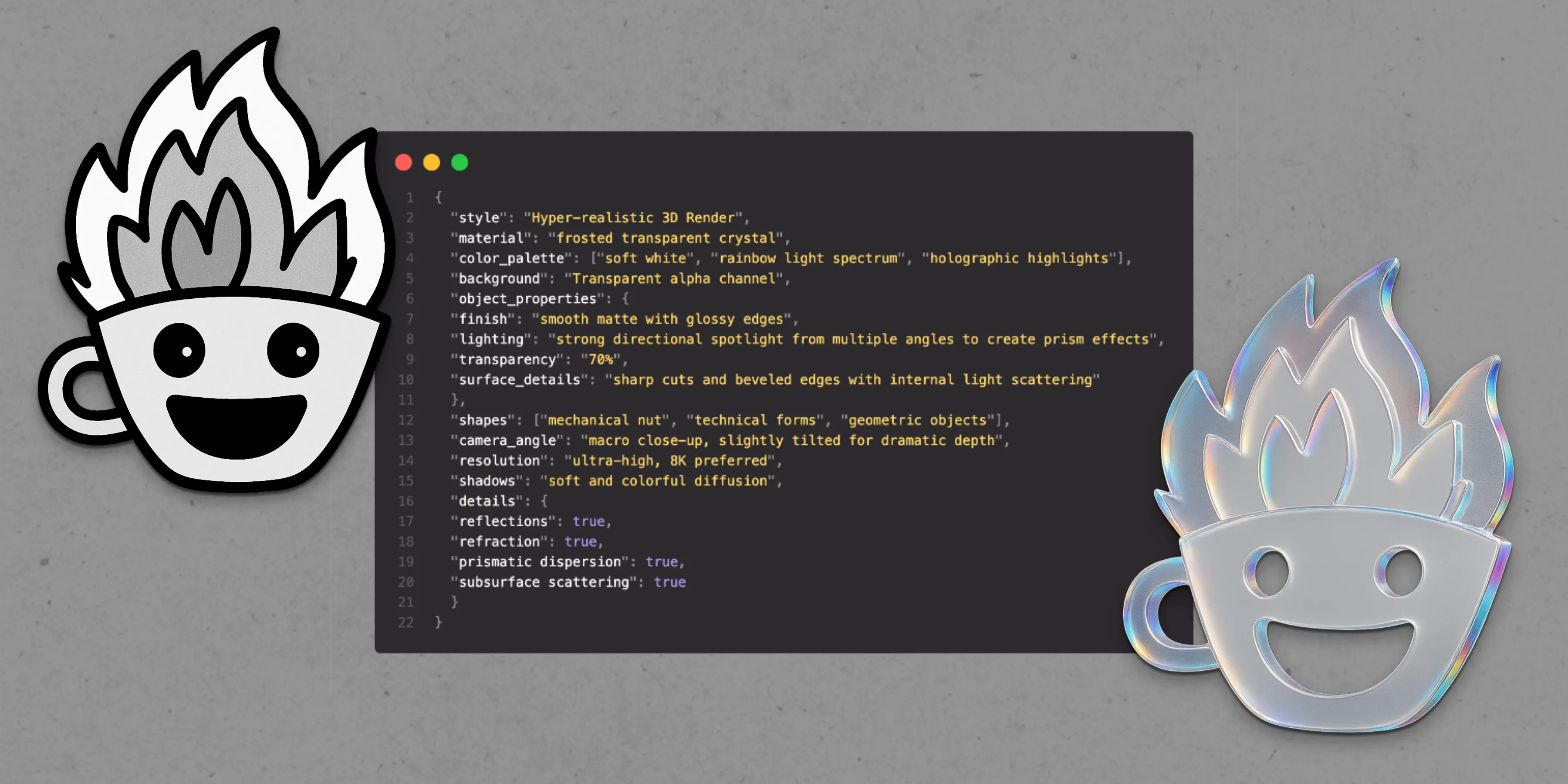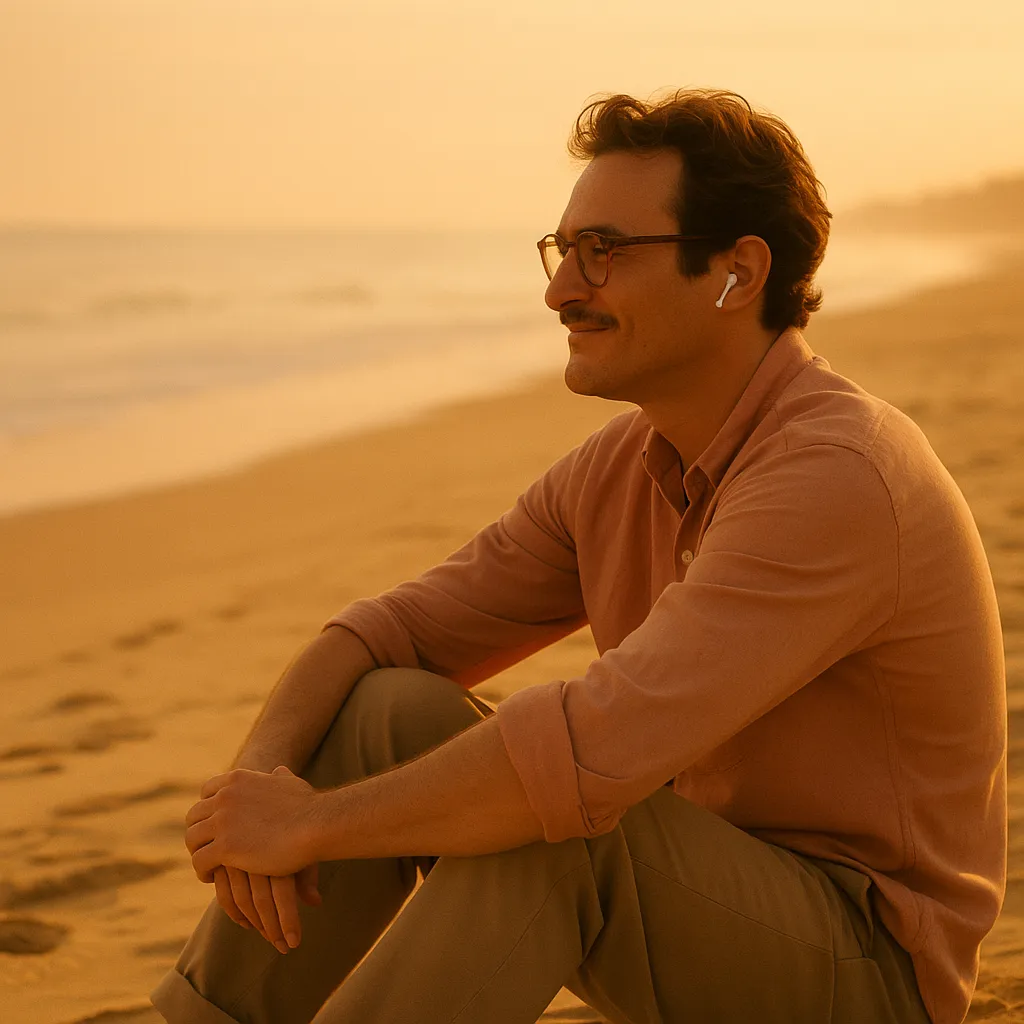
Structured Prompts
AI image generation with structured prompts
The Power of Structured Prompts
A new wave of AI image generators is here, boasting impressive understanding and fewer artifacts. This is great, but let’s be honest: balancing the detail you can provide with the detail the AI needs for predictable results remains a challenge. You want consistency, not a lottery.
Your Prompt’s Blueprint
What’s the solution? Structured input. This isn’t complex; it’s just data.
Think JSON, YAML, XML, or even Markdown. By using data structures, you give your prompts a clear, unambiguous context, leading directly to more predictable and consistent image generation. \
This is about taking control of the chaos. Instead of vague prose, you’re providing a precise blueprint.
Consider this OpenAI Image-1 prompt example for a logo in a specific 3D material:
Generate an image of this logo based on this 3D material on a transparent background:
{
"style": "Hyper-realistic 3D Render",
"material": "frosted transparent crystal",
"color_palette": ["soft white", "rainbow light spectrum", "holographic highlights"],
"background": "Transparent alpha channel",
"object_properties": {
"finish": "smooth matte with glossy edges",
"lighting": "strong directional spotlight from multiple angles to create prism effects",
"transparency": "70%",
"surface_details": "sharp cuts and beveled edges with internal light scattering"
},
"shapes": ["mechanical nut", "technical forms", "geometric objects"],
"camera_angle": "macro close-up, slightly tilted for dramatic depth",
"resolution": "ultra-high, 8K preferred",
"shadows": "soft and colorful diffusion",
"details": {
"reflections": true,
"refraction": true,
"prismatic dispersion": true,
"subsurface scattering": true
}
}Results
| Original | AI Render |
|---|---|
 |  |
Here’s the template:
Generate an image of my logo based on this 3D material on a transparent background:
{
"style": "$STYLE$",
"material": "$MATERIAL$",
"color_palette": ["$COLOR_1$", "$COLOR_2$", "$COLOR_3$"],
"background": "$BACKGROUND_DESCRIPTION$",
"object_properties": {
"finish": "$FINISH$",
"lighting": "$LIGHTING_DESCRIPTION$",
"transparency": "$TRANSPARENCY_PERCENTAGE$",
"surface_details": "$SURFACE_DETAILS$"
},
"shapes": ["$SHAPE_1$", "$SHAPE_2$", "$SHAPE_3$"],
"camera_angle": "$CAMERA_ANGLE$",
"resolution": "$RESOLUTION$",
"shadows": "$SHADOWS_DESCRIPTION$",
"details": {
"reflections": "$REFLECTIONS_BOOLEAN$",
"refraction": "$REFRACTION_BOOLEAN$",
"prismatic dispersion": "$PRISMATIC_DISPERSION_BOOLEAN$",
"subsurface scattering": "$SUBSURFACE_SCATTERING_BOOLEAN$"
}
}The Template for Consistency
This approach isn’t just for one-off use. It’s a template. You can fill in the values yourself if you have a clear vision, or, even better, describe the material to an LLM and have it populate the data structure. This is how you scale consistency.
For storytelling:
Generate a high-detail image depicting the following scene, based on a cinematic script breakdown:
{
"scene_overview": "Theodore shares an intimate, playful \"date\" with Samantha on a serene beach. It captures their unique, surreal connection amidst natural beauty.",
"location": "A vast, uncrowded beach with soft, warm sand leading to a calm ocean. The distant horizon is hazy, blurring sea and sky into an expansive, ethereal backdrop.",
"time_of_day_lighting": "Late afternoon, transitioning into the golden hour. Lighting is soft, diffused, and incredibly warm, casting long, gentle shadows.",
"mood_atmosphere": "Intimate, contemplative, and subtly melancholic, yet quietly joyful. A pervasive sense of peaceful isolation and fragile beauty.",
"primary_characters": [
"Theodore Twombly: Mid-30s, relaxed attire, listening intently with an earpiece.",
"His expression shifts between introspection and subtle smiles, conveying deep absorption."
],
"secondary_characters_elements": [
"Few or no other figures, emphasizing Theodore's solitary focus.",
"Gentle, rhythmic ocean waves provide a calming backdrop."
],
"additional_visual_directives_style_notes": [
"Soft, shallow depth of field with a dreamlike quality; warm, muted color palette.",
"Emphasize light wrapping around Theodore; focus on his subtle expressions."
]
}
Lastly
PRO TIP 1: Want a PNG with a transparent background? Explicitly set "background" to "Transparent alpha channel". Don’t leave it to chance.
PRO TIP 2: If you’re compositing, make sure the "camera_angle" in your prompt matches that of the photo or object you’re applying the material to. Details matter for seamless integration.
Ultimately, using structured data gives you a powerful lever over AI image generation. It shifts you from guessing to defining, from hoping to achieving predictable results. That’s the real win.